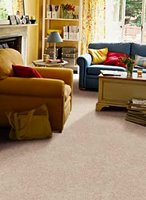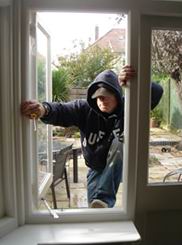Save Money With Tankless Water Heaters

Hot water heating accounts for about 20% (or more) of the average North American household’s annual energy costs. With energy prices rising day by day it is becoming important to take a closer look at where the money is going.
The average yearly cost for a conventional gas or electric storage hot water heater is approximately $500 for a 1300sq.ft., 4 member, family home. It decreases or increases depending on how many people live in the house and on their particular water usage habits.
Conventional hot water heaters store water and maintain the water temperature to the temperature setting on the tank - usually between 120° and 140° F. That means keeping water hot even when you do not need it - while you are at work; while you are sleeping; while you are away on holidays.
These “standby” losses represent 15% to 25% of a household’s annual water heating costs.
Another thing that annoys all of us, is waiting for the water to heat up because someone took a bath before us. The storage tank water heaters only have a limited amount of hot water. After that is gone you have to wait for the tank to get heated again.
Throughout the rest of the world, where energy costs have consistently been higher than in North America, different methods of heating water are common.
Tankless Water Heaters
No bigger than a kitchen cabbinet, Luna Baxi tankless water heater saves space, heats the house and produces an endless supply of hot water.
Enter Tankless Hot Water Heaters. They began appearing in the United States and Canada about 25 years ago but have been used in Europe for the last 50 years.
Unlike "conventional" tank water heaters, tankless water heaters heat water only as it is used, or “on demand”. Opening a hot water faucet ignites the powerful burners and the computer monitors the water temperature and adjusts the burners according to the need. High demand, high heat. Low demand, low heat.
Because the efficiency rate of tankless water heaters is about 20% higher, averaging around 90% and reaching up to 96% and there is no stand by losses, savings on your energy bills are evident.
Some models even have the capacity to heat the house at the same time. With these tankless water heaters, which are connected either to radiant floor heat or to a heating coil in your furnace (air handler), you can bring high efficiency space heating capacities to every home.
Just imagine a contraption the size of your kitchen cabinet, heating your home and giving you an endless supply of potable hot water. You do not need a separate furnace and a separate hot water heater.
Some models can be mounted on the exterior of a home, freeing up valuable floor and closet space on the inside. The unit can be placed in a recessed box, flush-mounted and painted or textured to match the exterior of the home.
Tankless water heaters can also be used for supplementary heat, such as a booster to a solar hot water system, or snow melting systems, or to meet all your hot water needs.
The major players include: Takagi, Rheem, Noritz, Rinnai and up and coming Luna Baxi.
We would suggest researching different makes and models in order to make the right choice for your particular needs and circumstances. (Original article at http://www.ontario-home-builder.com/Tankless_Water_Heaters.html )
About The Author
Harvey Juric, ICF Consultant and CEO of ICFhome.ca is a custom home builder in southern Ontario. He runs several websites promoting energy efficient homes. If you are interested in modern home building, his thoughts may be found on the following web sites: http://insulated-concrete.com, http://repairing-building-contractor.com http://ontario-home-builder.com.













